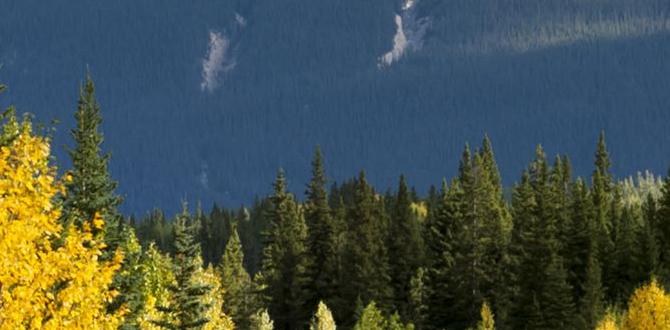Solo travel in Arches National Park is an unforgettable adventure! This guide offers essential tips for a safe, enjoyable, and stress-free experience, covering everything from planning and packing to navigating the park and finding hidden gems. You’ll be ready to explore the stunning arches with confidence.
Arches National Park is a place of wonder, with towering sandstone formations and breathtaking desert landscapes. Traveling solo here can be incredibly rewarding, offering a unique sense of freedom and connection with nature.
However, as with any solo trip, a little preparation can make all the difference. You might be wondering how to stay safe, what to pack for the desert climate, or even how to make the most of your time without a travel companion. Don’t worry, planning a solo trip to Arches is easier than you think! This guide will walk you through everything you need to know to ensure a comfortable, safe, and truly memorable experience. Get ready to discover the magic of Arches, your way.
Why Arches National Park for Solo Travel?
Arches National Park beckons solo travelers for many reasons. Its iconic landscapes offer a profound sense of solitude and awe. The park is generally very safe, with well-maintained trails and a friendly atmosphere among visitors. It’s a place where you can truly disconnect from the everyday hustle and reconnect with yourself and the natural world.
The striking formations, like Delicate Arch and Landscape Arch, provide fantastic photo opportunities and a sense of accomplishment as you hike to reach them. For those seeking a personal challenge or a chance to reflect, Arches offers an unparalleled backdrop. The park’s accessibility, with a visitor center and clear signage, also makes it a great choice for beginners venturing out on their own.
Planning Your Arches Solo Adventure
Preparation is key to a successful solo trip, especially in a desert environment like Arches. A little foresight will ensure you’re comfortable, safe, and can focus on the incredible scenery.
Best Time to Visit Arches Solo
The “best” time depends on your preferences for weather and crowds.
Spring (March-May) and Fall (September-November)
- Pros: Mild temperatures, ideal for hiking. Fewer crowds than summer. Beautiful wildflowers in spring and colorful foliage in fall.
- Cons: Weather can be unpredictable; occasional dust storms or late snow in spring/early fall.
Summer (June-August)
- Pros: Long daylight hours. Easy to explore without worrying about darkness.
- Cons: Very hot temperatures, often exceeding 100°F (38°C). Peak tourist season means larger crowds and potential parking issues.
Winter (December-February)
- Pros: Smallest crowds. Beautiful snow dustings on red rocks can be magical. Lower accommodation prices.
- Cons: Cold temperatures. Shorter daylight hours. Some roads or trails might be temporarily closed due to snow or ice.
For solo female travelers, spring and fall often strike a great balance between pleasant weather and manageable crowds, offering a comfortable environment for exploration.
Arches Entrance Pass & Timed Entry
Arches National Park often implements a timed entry system, especially during peak seasons (typically April 3 through October 3, 2023, but check the official NPS website for the most current information). This is crucial for solo travelers to know so you can book your entry window in advance.
Permit Required: You’ll need a timed entry permit for entry into the park between specific hours, in addition to your park entrance fee. You can reserve these on Recreation.gov.
Book Early: These permits are released on a rolling basis and can sell out quickly, sometimes months in advance.
Entrance Fee: Besides the timed entry, you’ll still need to pay the standard park entrance fee, which is valid for seven days.
This system helps manage visitor numbers, making your experience more enjoyable and less congested, which is a big plus for solo adventurers seeking peace.
Accommodation Options Near Arches
Moab, Utah, is the gateway town to Arches and offers a range of lodging.
In Moab
- Hotels/Motels: Numerous options from budget-friendly to more upscale.
- Bed & Breakfasts: Offer a more personal touch.
- Vacation Rentals: Good for longer stays or if you prefer more space.
- Campgrounds: Several campgrounds are available in and around Moab, including some within Arches National Park itself (like Devils Garden Campground, which requires reservations well in advance).
Consider booking accommodation well in advance, especially if traveling during peak season. For solo travelers, staying in a hotel or motel can offer added security and convenience.
Navigating Arches Solo: Safety First!
Solo travel in Arches is generally very safe, but prioritizing your well-being is essential. Being prepared means you can relax and enjoy the stunning surroundings.
Essential Gear for Solo Hiking
Packing the right gear is non-negotiable for a confident solo journey in the desert.
The Ten Essentials (Updated for Desert Hiking)
These are always a good idea, but especially crucial when you’re on your own.
| Item | Why it’s Crucial for Solo Arches Travel |
|---|---|
| Navigation | Physical Map & Compass (and know how to use them!), GPS device or app with downloaded maps. Cell service is spotty. |
| Sun Protection | High SPF sunscreen, wide-brimmed hat, sunglasses. The Utah sun is intense. |
| Insulation | Extra layers of clothing, even in warm weather. Deserts get cold at night and can experience sudden weather changes. Think fleece or a light, packable jacket. |
| Illumination | Headlamp or flashlight with extra batteries. Crucial if a hike takes longer than expected. |
| First-Aid Supplies | A well-stocked first-aid kit, including blister treatment and any personal medications. |
| Fire | Matches or lighter (for emergencies only; campfires are often restricted). Waterproof matches are best. |
| Repair Kit & Tools | Multitool or knife, duct tape for repairs (gear, shoes, etc.). |
| Nutrition | Extra food beyond your needs for the day. High-energy snacks like nuts, bars, and dried fruit. |
| Hydration | Plenty of water! At least 1 gallon (4 liters) per person per day is recommended. Consider a water filter or purification tablets as a backup. Hydration pack or multiple water bottles. |
| Emergency Shelter | A lightweight emergency blanket or bivy sack. |
Pack It In, Pack It Out
Remember to carry out everything you carry in, including all trash and food scraps. This helps preserve the fragile desert environment.
Staying Safe as a Solo Hiker
Tell Someone Your Plans: Before you head out for a hike, let your hotel, a friend, or family member know where you’re going, your planned route, and when you expect to return. Check in with them when you’re safely back.
Hike Popular Trails: Especially when you’re starting out solo, sticking to well-trafficked trails increases the chances of encountering other people if you need assistance. Trails like the Delicate Arch Viewpoint, Balanced Rock, and the Windows Section are generally busy.
Know Your Limits: Be realistic about your fitness level and experience. The desert heat can be taxing, and dehydration can set in quickly. Don’t push yourself too hard.
Stay Hydrated & Eat: This can’t be stressed enough. Drink water even if you don’t feel thirsty. Bring plenty of snacks to maintain energy levels.
Be Aware of Your Surroundings: Watch for loose rocks, uneven terrain, and potential wildlife.
Cell Service is Limited: Don’t rely on your phone for communication. Consider a satellite messenger or personal locator beacon (PLB) for more remote hikes if you’re concerned.
Carry a Whistle: Three short blasts are a universal signal for distress.
Wildlife Encounters
You might see desert bighorn sheep, mule deer, coyotes, rabbits, and various reptiles. Keep a safe distance, never feed the animals, and secure your food properly to avoid attracting them to your campsite or picnic area.
Exploring Arches: Must-See Sights for the Solo Traveler
Arches offers a variety of landscapes and hikes, perfect for solo exploration at your own pace.
Iconic Arches You Can’t Miss
Delicate Arch: This is the symbol of Utah. The hike to the viewpoint is moderately strenuous (3 miles roundtrip) and can be hot, but the payoff is immense. Consider going at sunrise or sunset for dramatic lighting and fewer crowds, but remember to carry a headlamp!
Double Arch: Located in the Windows Section, this is one of the largest arches in the park. It’s an easy, accessible walk to reach impressive views.
Landscape Arch: Found in the Devils Garden area, this is one of the longest natural bridges in the world. The trail is relatively flat and easy for the first mile.
The Windows Section (North and South Window, Turret Arch): This area offers several impressive arches within a short, easy walking loop. It’s a great place to start your exploration.
Balanced Rock: An easy loop trail leads to the base of this colossal formation. It’s a great spot for photos and a quick, rewarding stop.
Moderate Hikes for the Solo Adventurer
Devils Garden Trail (to Landscape Arch): As mentioned, this is a fairly easy 1.6-mile out-and-back hike to Landscape Arch. For the more adventurous solo traveler, the trail continues further, becoming more primitive and requiring some scrambling over fins of rock to reach arches like Navajo Arch and Partition Arch.
Park Avenue Trail: This hike takes you down into a canyon floor, surrounded by massive sandstone fins. It’s a 1-mile one-way trail (you’ll need to walk back or arrange a pick-up if you don’t want to do it as an out-and-back). It feels like walking through a city of stone.
Challenging Hikes for Experienced Soloists
Delicate Arch Trail: While short, it’s a strenuous hike with a significant uphill climb on slickrock. Proper footwear and plenty of water are essential.
Fiery Furnace: This is a ranger-guided tour only, or a permit system for experienced hikers. It’s a maze of narrow canyons and fins that requires navigation skills and comfort with heights and tight spaces. Booking a ranger tour is highly recommended for solo visitors to ensure safety and a rich understanding of the area. Check the NPS website for tour information.
Solo Travel Hacks for Arches
Making the most of your solo journey involves a few smart tricks.
Embrace the Solitude
Solo travel in Arches is an opportunity for introspection. Take time to simply sit, observe, and absorb the immense beauty. Use a journal to capture your thoughts and experiences.
Photography Tips for One
Camera Gear: A lightweight camera or even your smartphone is perfect. Consider a portable tripod for stable shots, especially in low light or for capturing yourself in the frame.
Self-Timer/Remote: Master your camera’s self-timer or invest in a small Bluetooth remote shutter.
Ask Nicely: Don’t be afraid to ask other visitors if they can take your photo. Most people are happy to help! Offer to take theirs in return.
Focus on Details: Capture the textures of the rock, the unique shapes, and the play of light and shadow. These make for compelling images that tell a story.
Meet Other Travelers (If You Wish!)
While the beauty of solo travel is independence, sometimes it’s nice to connect.
Join a Ranger Program: Rangers offer guided walks and talks that are fantastic opportunities to learn and chat with fellow park enthusiasts.
Campgrounds: If camping, campgrounds are natural places to strike up conversations around the campfire.
Visitor Center: Engage with park staff and other visitors at the visitor center.
Take a Guided Tour: As mentioned, tours like Fiery Furnace or even a general park tour can be a way to share an experience with others.
Utilizing Technology
Park Apps: Download the official NPS Arches National Park app for maps, alerts, and information.
Offline Maps: Google Maps or other navigation apps allow you to download maps for offline use, essential for areas with no cell service.
Portable Charger: Keep your devices powered up! A quality portable charger is a solo traveler’s best friend.
Packing for Comfort and Preparedness
Beyond the Ten Essentials, specific items can enhance your solo comfort.
Clothing Essentials
Lightweight, Breathable Layers: Think moisture-wicking t-shirts, long-sleeved shirts for sun protection, and quick-drying pants or shorts.
Warm Layer: A fleece jacket or insulated vest for cooler mornings and evenings.
Rain Gear: A lightweight, waterproof and windproof jacket.
Comfortable Hiking Boots/Shoes: Broken-in hiking boots or sturdy trail shoes with good ankle support are a must.
Socks: Wool or synthetic hiking socks to prevent blisters.
Hat: A wide-brimmed hat for sun protection.
Bandana or Buff: Versatile for sun protection, dust, or sweat.
Personal Care & Comfort Items
For solo travelers, comfort and feeling prepared can reduce stress, allowing for a more enjoyable experience.
Sunscreen & Lip Balm with SPF: Reapply frequently.
Insect Repellent: Especially for dawn and dusk near water sources.
Hand Sanitizer & Wet Wipes: For quick clean-ups.
Aloe Vera Gel: For soothing sunburn.
Basic Toiletries: Keep it light and travel-sized.
Any Personal Medical Needs: I recommend packing a few extra doses of essential medications and any comfort items that help manage specific health needs, like personal care products for urinary incontinence. While Arches is a remote wilderness, having discreet solutions for comfort, such as adult or child diapers if needed for longer travel days or unexpected delays, can provide immense peace of mind. Knowing you’re prepared for any personal comfort need allows you to focus on the adventure, not worry. Many brands offer highly absorbent and discreet options suitable for active use.
Comfortable Sleepwear/Loungewear: For relaxing after a day of hiking.
Food and Drink Supplies
Reusable Water Bottles/Hydration Reservoir: Aim for at least 3-4 liters of water per person per day.
Electrolyte Mixes/Tablets: Replenish salts lost through sweat.
High-Energy Snacks: Trail mix, granola bars, jerky, dried fruit, nuts, and energy gels.
Easy-to-Prepare Meals: If camping or staying in a rental with cooking facilities, opt for simple, no-cook or minimal-cook options like sandwiches, wraps, or dehydrated meals.
Arches by Vehicle: Scenic Drive Tips for Soloists
The scenic drive through Arches National Park is an experience in itself. It’s a fantastic way to see many of the park’s highlights without strenuous hiking.
The Park Road Loop
The main park road winds for 18 miles (one way) from the entrance station to the end of Devils Garden. Along this road, you’ll find access points to trailheads and viewpoints.
Key Stops and Viewpoints:
- Visitor Center: Your first stop for maps, information, and ranger advice.
- Park Avenue Viewpoint: Offers a stunning vista of towering sandstone fins.
- Courthouse Towers: Impressive rock formations resembling a city.
- Balanced Rock: Easily accessible from the road.
- The Windows Section: Short, easy trails to North Window, South Window, and Turret Arch.
- Delicate Arch Viewpoint Trails: Upper and Lower Viewpoints offer different perspectives of the iconic arch.
- Salt Valley Overlook: Expansive views of the park’s interior.
- Devils Garden Trailhead: Access to Landscape Arch and further primitive trails.
Tips for Driving Solo
Check Road Conditions: Always check the NPS website or stop at the visitor center for any road closures or construction.
Look for Pull-offs: Use designated pull-offs to stop for photos or to let faster traffic pass. Remember, you are often responsible for managing traffic behind you.
Take It Slow: The speed limit is 30-45 mph for a reason. Enjoy the scenery, and watch for pedestrians and wildlife.
Vehicle Preparedness: Ensure your vehicle is in good working order. Check tires, brakes, and fluids before you enter the park, as services are limited. You’ll want to be sure you have adequate tire pressure, especially with the extreme temperature fluctuations in the desert. Consider bringing a spare tire and a basic toolkit.
* Fuel Up: Fill your gas tank in Moab before entering the park, as there are no gas stations inside Arches





